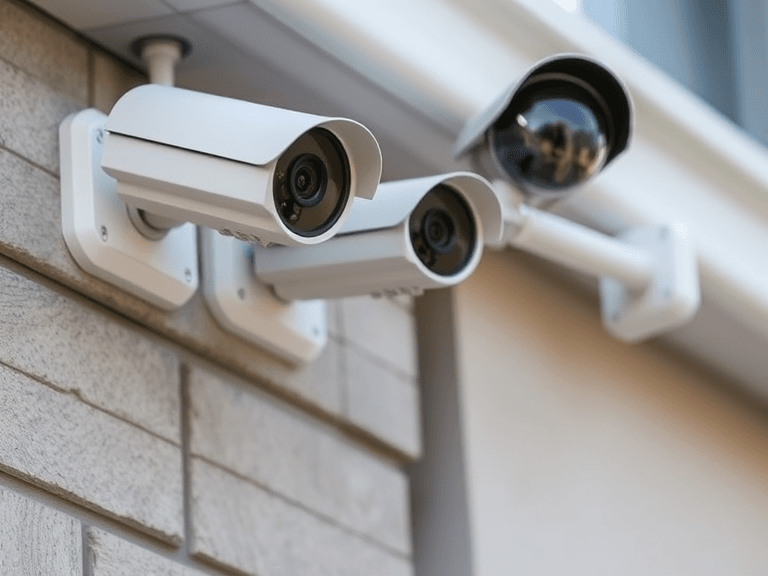In today’s world, ensuring the safety of your home or business is more important than ever. A well-installed security system not only protects your property from intruders but also offers peace of mind and can even reduce your insurance costs. At ZZ the HandyMan, we understand the critical role a robust security system plays in safeguarding your assets. In this comprehensive guide, we’ll walk you through the key aspects of security system installation, helping you make informed decisions for your safety.
Why Install a Security System?
A security system is much more than just a deterrent to burglars. Modern systems come with features that offer round-the-clock surveillance, remote access, and even environmental monitoring. Here are some compelling reasons to install a security system:
- Crime Deterrence: Visible cameras and alarm systems discourage potential intruders.
- Remote Monitoring: Keep an eye on your property from anywhere using a smartphone or computer.
- Emergency Alerts: Get notified instantly about fires, gas leaks, or unauthorized access.
- Insurance Benefits: Many insurance providers offer discounts for properties equipped with a security system.
Choosing the Right Security System
Before diving into installation, it’s essential to select the right type of security system for your needs. Here are some options to consider:
1. Wired vs. Wireless Systems
- Wired Systems: Reliable and less prone to interference, but require professional installation.
- Wireless Systems: Easier to install and relocate but may require regular battery changes.
2. Monitored vs. Unmonitored Systems
- Monitored Systems: Connected to a professional monitoring service that alerts authorities in emergencies.
- Unmonitored Systems: Rely on alarms and alerts to notify you directly.
3. Smart Security Systems
- Integrate with smart home devices for seamless automation and control.
4. Specialized Features
- Cameras with night vision and motion detection.
- Door and window sensors.
- Environmental monitors for smoke, CO2, and flooding.
Pre-Installation Considerations
Before installing a security system, evaluate the following:
- Property Layout: Identify high-risk areas like entry points, garages, and basements.
- Budget: Determine how much you’re willing to spend on equipment and installation.
- Local Regulations: Ensure compliance with any laws regarding camera placement and surveillance.
- Connectivity: Check for stable internet access if opting for smart or wireless systems.
Step-by-Step Guide to Security System Installation
Step 1: Plan Your System
Start by mapping out where you’ll place cameras, sensors, and control panels. Prioritize entry points, blind spots, and areas with high-value items.
Step 2: Install Cameras
Position cameras at strategic locations such as:
- Front and back doors.
- Driveways and garages.
- First-floor windows.
- Stairwells and hallways.
Mount the cameras securely and ensure they have a clear field of view.
Step 3: Install Sensors
Place door and window sensors at all potential entry points. Test their alignment to ensure they trigger the alarm when opened.
Step 4: Set Up the Control Panel
The control panel is the heart of your security system. Install it in a central yet discreet location. Connect it to power and ensure it communicates effectively with all components.
Step 5: Connect to Power and Internet
For wired systems, ensure proper connections to power outlets and routers. For wireless systems, pair all components with the control panel via Wi-Fi or Bluetooth.
Step 6: Test the System
Once installed, thoroughly test each component:
- Verify camera feeds on your smartphone or monitor.
- Open and close doors and windows to check sensor responsiveness.
- Trigger the alarm to ensure it alerts you or the monitoring service.
Professional Installation vs. DIY
While some security systems are DIY-friendly, others require professional expertise. At ZZ the HandyMan, we specialize in:
- Ensuring optimal camera angles and placements.
- Configuring advanced systems for seamless integration.
- Testing the system for maximum reliability.
DIY installation can save costs, but professional installation guarantees a system that works flawlessly.
Maintaining Your Security System
Regular maintenance ensures your security system remains effective over time. Here’s how to keep it in top shape:
- Check Batteries: Replace batteries in wireless components periodically.
- Inspect Equipment: Ensure cameras, sensors, and alarms are free from damage.
- Update Software: Keep firmware and apps updated for the latest features and security patches.
- Conduct Routine Tests: Test the system monthly to ensure all components function properly.
Common Mistakes to Avoid
Avoid these pitfalls to maximize your security system’s effectiveness:
- Ignoring Blind Spots: Cover all vulnerable areas.
- Poor Camera Placement: Ensure cameras are out of reach and have a clear view.
- Weak Passwords: Use strong, unique passwords for system access.
- Skipping Maintenance: Regular checks prevent unexpected failures.
Why Choose ZZ the HandyMan?
At ZZ the HandyMan, we pride ourselves on delivering reliable and customized security solutions. Whether you need a basic setup or a sophisticated system, our team ensures your property is protected. With years of experience and a commitment to quality, we make security simple and stress-free.
Final Thoughts
Investing in a security system is one of the smartest decisions you can make for your home or business. From deterring intruders to providing peace of mind, a well-installed system offers unmatched benefits. By partnering with ZZ the HandyMan, you’re choosing expertise and reliability for your security needs. Don’t wait until it’s too late. Contact ZZ the HandyMan today to secure your property with a state-of-the-art security system tailored to your needs.


